Executive Summary:
The Hunger Project (THP) has developed a systematic methodology for supporting rural communities to achieve the SDGs. This paper describes the methodology, using the experience of the Betaga Union Parishad as an illustrative example, and identifies policy recommendations appropriate to taking this approach to national scale.
Click here to download pdf version.
[youtube https://www.youtube.com/watch?v=aMkAvyKMFxs]
Introduction:
During the period of Millennium Development Goals (MDGs), Bangladesh achieved “remarkable progresses in the areas of poverty alleviation, ensuring food security, primary school enrolment, gender parity in primary and secondary level education, lowering the infant and under-five mortality rate and maternal mortality ratio, improving immunization coverage; and reducing the incidence of communicable diseases” (UNDP, 2015). Such achievements are largely attributable to the resilience and creativity of the Bangladeshi people in finding innovative and low cost solutions and empowering individual “agency,” especially of women (Mahmud, Asadullah & Savoia, 2013).
The Sustainable Development Goals (SDGs) are more ambitious and will be more challenging to achieve. In addition, Bangladesh faces many daunting challenges, including climate change, automation, corruption, governance failures, institutional weaknesses, confrontational politics and growing violence which threaten its future progress. Thus, for achieving SDGs, institutions will have to function, communities will have to work together, peace and justice will have to prevail, governance will have to improve and environmental sustainability will have to be ensured.
Why “localize” the SDGs?
Although primary accountability for the SDGs belongs to nations, the SDGs explicitly call for action by local authorities. At least 12 of the 17 SDGs – all excepting9, 12, 13, 14 and 17 – require integrated strategies at the community level to overcome the interlinked challenges of poverty, ill-health, social ills, poor governance and environmental destruction. Fortunately, Bangladesh’s constitution wisely placed key responsibilities for social and economic development, including “the preparation and implementation of plans relating to public services and economic development” at the level closest to the people,” with the local government bodies, particularly the Union Parishad (UP), the body at the doorstep of the people (Constitution of the People’s Republic of Bangladesh, 1971, Article 59(2)(C)).
This constitutional mandate makes it imperative that Bangladesh localize the SDGs – that is, it must equip the UPs with the skills and resources to analyze their local situation, set priorities for each of the relevant SDGs, and track and report their progress.
The Local Government (UP) Act of 2009 strengthens local government by incorporating global best practices for direct participation by active citizens in planning and social accountability, through ward shava for participatory planning, citizen charter, open budget meetings and annual reporting.
SDG 16 – the goal that makes all goals possible – explicitly calls for “peaceful and inclusive societies for sustainable development, provide access to justice for all and build effective, accountable and inclusive institutions at all levels” (which includes the community level). Target 16.7 is to “ensure responsive, inclusive, participatory and representative decision-making at all levels.” Goal 16 is therefore the crown-jewel of the SDGs and the achievement of other goals depends on it.
SDG Target 16.7 requires citizen voice in decision making, which for most citizens can only effectively happen at the UP and village levels. (Coonrod, 2016).
Achieving SDGs in light of SDG 16
The Hunger Project-Bangladesh (THP), which played a role in pioneering the reforms incorporated in the 2009 UP Act, has set itself the task of working in partnership with local government to develop a package of community mobilization and capacity-building interventions known as the “SDG Union Strategy” to demonstrate how fully implementing the Act can achieve the SDGs. THP has been demonstrating the working of this innovative model in 185 Unions, 61 of which are supported by BRAC, as a low-cost and sustainable means of achieving SDGs.
The SDG Union Strategy calls for a partnership between: (1) the people, (2) their elected representatives at the local level, (3) a civil society created from the ground up, and (4) the government functionaries responsible for delivering services to the grassroots. These stakeholders are brought together by a shared vision to achieve SDGs at the Union level.
Role of the people. People in SDG Unions, including women and youth, are awakened and mobilized to make them active as citizens and take action to achieve SDGs. Mobilization of people creates “social capital,” which can make up for lack of “financial capital,” and can be used for solving many social problems through social movements and social resistance. Community members carry out various campaigns to combat social ills such as child marriage, violence against women, substance abuse, and environmental degradation. Using the Participatory Action Research (PAR) methodology, the poorest of the poor are also mobilized to become “barefoot researchers” to identify the causes of their poverty, form “self-help groups” and take other action necessary to end their own hunger and poverty. Mobilization of the poor is designed to ensure that no one is left behind, which is an inspiring aspiration of SDGG.
Role of the UP representatives. UP representatives, receiving both statutory and transformational training, provide catalytic leadership not only to mobilize people, but also to ensure that the services people are entitled to actually reach them. UPs belonging to the SDG Unions sign an MoU to make the achievement of SDGS their priority, make the entire UP body functional, make standing committees effective and ensure social justice. The UP works in partnership with the citizens to hold Ward Shavas, Open Budget Meetings and prepare Five-Year Plans.
Role of the local civil society. Civil society is built up at the Union level, and consists of approximately 150 trained volunteers, including Animators, Women Leaders, Youth Leaders, PAR facilitators, champions for good governance and Peace Ambassadors. The members of the civil society on the one hand act as watchdog over the UPs and at the same time work in partnership with them. They also empower and mobilize the community members to ensure inclusivity and arrange skills training to help them become authors of their own future.
Role of the government functionaries. Local level government functionaries work with the community members to give them access to the available government services, make those services affordable and deliver those with accountability so that an “enabling environment” is created for people to succeed (THP, 1994).
These four stakeholders, working together, constitute a Community-led Development Approach to achieve the SDGs (Coonrod, 2016). A recent study by four professors of Columbia, Princeton and Cambridge Universities, published in the Proceedings of the National Academy of Sciences of the USA, found that “community trust,” created through this approach in our working area, positively affect the poor’s economic decision making and thereby their poverty (Jachimowicz, Chafik, Munrat, Prabhu, & Weber, 2017). In addition to achieving better lives, one unique contribution of this “whole society” approach is peace at the local level since people working together transcend their differences and diminish conflicts (Majumdar, 2014).
Process of creating an SDG Union
The work of creating an SDG Union begins through transforming the mindset. For the citizens of Bangladesh who live in conditions of poverty, meaningful participation in decision-making seems like an impossible dream. For government functionaries operating within highly centralized, top-down ministries, the concept of direct accountability to citizens seems like an impractical nuisance. However, countries that have successfully implemented bottom-up planning and social accountability have found that it must begin with a profound shift in mindset of both functionaries and residents, from “benefactor/beneficiary” to “public servant/active citizen.” To achieve this, the SDG Union Strategy begins with a “Vision, Commitment and Action” workshop and the training of approximately 150 grassroots volunteer animators and other volunteers in each Union committed and skilled in facilitating bottom-up development.
Village Development Committees – Building Civil Society from the Bottom Up. Exercising citizen voice is a collective process; active citizens from each segment of society (women, youth, the ultra-poor) must form community-based self-help groups to make their voices heard, and must work together to put forward a concise set of shared priorities. In addition to the body of Animators, the SDG Union Strategy trains Women Leaders, Youth Leaders, champions of good governance and girl’s rights, and PAR facilitators who create groups among the ultra-poor. The leaders of each of these village groups meet together as a Village Development Committee (VDC) to coordinate activities.
Transforming Gender Relations. The SDG principle of “No One Left Behind” has special meaning in rural Bangladesh, where adolescent girls and women often are not permitted to participate in public life. Trained Women Leaders from the village therefore organize “court yard” meetings where all family members can participate and discuss sensitive issues, such as halting domestic violence including child marriage, keeping girls in school, good nutrition and other human rights.
Active Partnership with Local Government. UP representatives and functionaries participate in a five-day training that both transforms their mindset and provides them with statutory information, especially on implementing the bottom-up reforms of the 2009 UP Act. Based on this new approach, the UP:
- Works in partnership with the VDCs to mobilize participation in Ward Shava for generating awareness of service standards under the Citizen Charter, and setting local priorities.
- Makes Standing Committees Functional by including trained volunteers and other interested citizens.
- Develops and publishes a 5-year plan based on ward shava input.
- Launches mass action campaigns to achieve goals in the plan.
- Reports annually through Open Budget Meetings and on progress on the plan.
Sustaining Peace and Social Harmony. The recent rise in violence, often exploiting religious and ethnic differences in hopes of partisan gains, is one of the greatest threats to progress on all the SDGs, and is central to SDG 16. For this reason, the SDG Union Strategy has begun creating Peace Facilitator Groups and training local Peace Ambassadors who can analyze the local situation and carry out actions that promote peace and social harmony. The Peace Ambassadors and other volunteers lead Citizenship and Social Harmony workshops to promote civic rights and responsibilities and peace at the local level. In 10 Upazilas, this process has resulted in the three major parties signing a Code of Conduct for peaceful resolution of any differences, collective action to halt violent extremism and promote pluralism to address identity-based prejudice.
Betaga Union: An Illustration of SDG Union in the Making
The Hunger Project has put into practice its innovative Community-led SDG Union model in 185 Unions, one of which is Betaga Union of Fakirhat Upazila of Bagerhat district. Betaga Union has 12 villages and population of 16,280, of which 8,120 are female and 8,160 are male. The literacy rate of the Union is 83%. The Union has four high schools and nine primary schools. Source of income of 56% of the people of the Union are from agriculture, followed by 18% from business, 4% from government service, 6% from non-government service, 7% from fisheries and poultry and 9% from daily labour.
The Union Parishad is an elected body of 13 individuals – elected for a five year term –headed by the Chairman. Swapan Das is the Chairman and he was elected five times in a row, which is very rare in Bangladesh. He has a Bachelor of Science degree and he was qualified to be a government bureaucrat but opted instead to engage in public service. He was picked as best Chairmen three times nationally and 13 times in the district and received many awards for his outstanding public service.
In 2003, Swapan Das took the 5-day Animators training of THP in Dhaka, which helped him take a stand to end hunger and poverty of his Union. In the following year, he had an opportunity to go to West Bengal and Kerala to see the workings of Gram Panchayat there with a group of other Chairmen and Members trained by THP. After returning from India, he organized an Animators training in his Union, offered by THP, to create a group of volunteers in order to put into practice the ideas of Gram Shava – the village assembly – to promote inclusive decision making and mobilize the people of the Union.
In 2010, THP launched its MDG Union Strategy, aimed at forging a partnership between the people, the UP representatives, a local civil society and government functionaries to make concentrated and integrated efforts beginning in an initial set of 110 Unions, including Betaga to help achieve the MDGs. Swapan Das signed a MoU with THP, in which he, on behalf of his Parishad, expressed commitment to work toward achieving MDGs, and THP committed to assist in this process without providing any financial resources.
As part of this effort, a group of volunteers were trained in Betaga. At present, Betaga Union has 253 Animators, of which 129 are female and 124 male 124, and 36 Women Leaders. The Union also has 177 Youth Leaders, of which 55 are female and 122 are male and 18 Girl Child Advocacy Group members. Betaga also has a committee of respected citizens championing good and effective governance. THP trained a total over 500 volunteers, some of whom already moved out of the area, and they constitute the civil society at the local level. These volunteers help organize the Ward Shavas and Open Budget Meetings to ensure the transparency and accountability of the Union Parishad. They also work closely with the elected representatives in mobilizing the people and carry out campaigns on various social issues.
UP Chairman Mr. Swapan Das says: “I am an Animator, trained by The Hunger Project – an organization committed to end hunger and poverty by unleashing the human spirit. In Betaga Union there are many other animators and volunteers who work with the UP body to achieve SDGs. I have learned from THP, particularly from its Country Director the concept of “social capital,” which comes from the mobilized efforts of the people, the importance of participatory decision making and to think outside the box to become successful.”
The volunteers mobilized other community members, especially women to form self-help groups. There are now nine such groups with collective savings of Tk. 3,07,522, which they use to loan out to each other. They also meet regularly to identify the actions they need to take to improve their lives and also deal with the issues, such as violence against women, child marriage, dowry and other social ills.
The volunteers, coming from all 12 villages, formed 12 Village Development Committees comprised of 245 member, of which 143 are male and 92 female. THP has no staff in Betaga Union other than a paid volunteer overseeing two UPs. The paid volunteers’ job is to keep other volunteers active and keep track of their work.
As part of their activism, the volunteers in the last 5 months (January – May 2017), for example, engaged in the following activities:
- Conducted 12 Citizenship and Social Harmony workshops;
- Held nine Vision, Commitment and Action (VCA) workshops with more than five hundred participants;
- Held 12 village development planning workshops with Village Development Committees;
- Youth Ending Hunger members organized `safe school campaign program for girls,’ in which 637 students participated;
- A PAR workshop was conducted with 17 women facilitators;
- Campaigns organized to ensure birth registration of 112 female and 45 male citizens;
- Courtyard meetings were held on nutrition and health issues with 133 female and 14 male participants;
- Organized 18 campaigns in schools for the prevention of dropouts from school where 185 female and 53 men students took part;
- Twelve meetings were held with 107 participants to create awareness regarding vaccination of pregnant mothers;
- Seventeen meetings were held on safe sanitation where 166 female and 48 male took part;
- Twenty five meetings were held on prevention of child marriage where 278 female and 103 male were present;
- In addition, the Ward Shava, Union Development Planning Meeting, Union Development Co-ordination Committee Meeting, pre-budget meeting and Open Budget Meeting were held during this period, in which the volunteers were involved.
In addition to THP volunteers , other government and non-government organizations, such as CSS, JJS, BRAC are active in Betaga. The World Bank funded LGSP project and other government departments provide very useful support to the Union Parishad and the people of the Union.
In Bangladesh, Union Parishads are usually Chairman-centred institutions, with the other twelve members usually playing very minor roles. Betaga is an exception where all the members of the UP body are active and function as a collective body. All the UP representatives received a Special Animators training from THP and they also work closely with other THP trained volunteers who form the civil society from the ground up.
In Bangladesh, Union Parishads have 13 Standing Committees (ST), the effectiveness of which are essential for improving the lives of the people. However, in reality such Committees are usually formed in name only. In Betaga, THP volunteers and interested community members with relevant experiences were inducted into the STs to ensure their effectiveness. STs in Betaga not only make recommendations to the UP body for decisions, but also monitor the functioning of schools, health clinics and other important activities within the Unions. In addition to the existing 13 STs, the Betaga Union Parishad formed another ST designed to cater to the special needs of the persons with disabilities. The activism, dedication and effectiveness of its STs makes Betaga different from other UPs in Bangladesh.
Animators Training Inspired Krishna Das to Create Self-help Group. Krisna Das, a housewife, participated in the 1,784thAnimator Training held in 2011 in Betaga UP. Through the training, her mindset changed. She developed the commitment and confidence to take action improve her own conditions and conditions of the people around her. Her dream was to have her son become an agriculture engineer, but it seemed an impossible dream as they were not well off.
Krishna formed her self-help group, named Samata Nari Unnayan Samity, in June 2012 with 20 other women, and to date they have saved Tk. 51,000, which they now give out as loans to their members. Several women have already taken loans with very low interest rates. They started initiatives such as sewing, dairy, and poultry farming. They have become a formidable group aspiring to initiate big income generating projects.
In the last few years, Krisna started vegetable gardening, poultry, and fisheries projects to increase her income. Her son was recently admitted to Patuakhali Agricultural University. She has found a way to pay for her child’s education. This has inspired the members of the self-help group to be united and take action as a collective.
The Union Parishad celebrates Betaga Day every year with much fanfare. It is intended to celebrate the successes of the people of Betaga and prizes are given to those who make important contributions in various fields. Every Standing Committee and Organic Betaga Project set up stalls in the day of the celebration to display their work. The day features sports, cultural events and other fun activities.
SDG Achievements of Betaga Union
| SDG Goal | Activities and Outcomes |
|---|---|
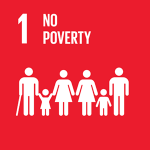 |
|
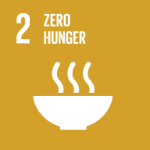 |
|
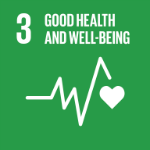 |
|
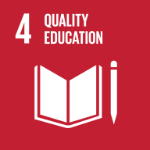 |
|
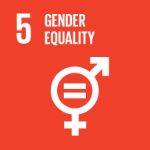 |
|
 |
|
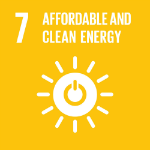 |
|
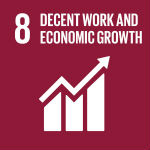 |
|
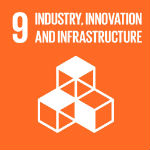 |
|
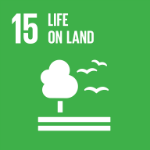 |
|
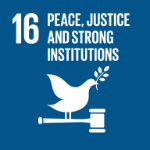 |
|
|
An Inspiring Example to Follow
Although we are into the second year of SDG era, Betaga Union Parishad already achieved some of the SDGs and on its way into achieving others. This has been possible by the gender-focused community-led development initiative created through the partnership of the people of the Union, their elected representatives, a group of volunteers acting as civil society from the ground up and the government functionaries responsible for empowering the citizens with services they deserve to have. The transformative leadership of the Union Parishad and particularly its Chairman has made the successes of Betaga a reality.
The achievements of the Betaga Union owe much to a functional, active and transparent Union Parishad and effective Standing Committees. It is also largely due to the integrated approach, society-wide mobilization and campaigns carried out jointly by the UP and a group of THP trained volunteers acting as ground level civil society. The assistance of various government functionaries made critical contributions in this endeavor. The creation of an SDG Union is not a money centered or staff-driven initiative, the constitutionally mandated body, namely the Union Parishad, took ownership of it and the entire community is involved in it. It is a low cost venture which likely will be sustained. No one is also likely to be left behind in the process of creation of SDG Union. Since in this initiative, people of all color, creed, religion and political persuasion work together for better collective future, it is likely to mitigate conflict and promote peace and harmony among the people.
Towards a National Program to Leave No Citizen’s Voice Behind
The MDGs were designed to get us halfway to a world free from hunger and poverty. The SDGs aspire to finish the job. This makes it necessary to transform promising gender-focused community-led development approaches such as the SDG Union Strategy into full national programs. Since the process of achieving the 2030 goals will take many years, we recommend that Bangladesh take urgent steps to bring gender-focused community-led development to all unions by 2020. This is consistent with the recommendations of the well known study by Jachimowicz, Chafik, Munrat, Prabhu, & Weber (2017) that the policy to end poverty “should move beyond a sole focus on the low-income individual and instead provide additional emphasis on the low income community.” Bangladesh’s broad collection of NGOs possess the skilled facilitators and trainers needed for such a community-based approach. Other countries, such as South Korea, Afghanistan, the Philippines, Indonesia, Kenya and Brazil have already done this to great effect, and Bangladesh can do the same.
Policy Recommendations: To enable Unions to fully implement their constitutional responsibilities in key sectors required to achieve the SDGs, we recommend the following:
- Further devolution of public resources, ensuring UPs manage at least 20%. Currently, only 18% of public resources are devolved across all sub-national levels.
- Devolution of all the government functionaries who work at the Union level and additional personnel to work with Standing Committees.
- High-level mandates for line ministry personnel to embrace the concept of active citizen participation in the activities of Union Parishads, including training in gender-focused, community-led development.
- International support for strategic planning at the district level between District level government officials and NGOs for campaigns to mobilize active citizenry and Ward Shava participation in every Union.
References
Bangladesh Ministry of Local Government, Rural Development & Cooperatives. Local Government (UP) Act of 2009 (Amended 2010). Retrieved from http://www.lgd.gov.bd/LGD_FILES/local_government_union_parishad_act2009.pdf
Betaga Union Parishad (2016) (2015), Budget 2015-16 and Budget 2014-15, www.betagaup.bagerhat.gov.bd. (in Bangla)
Betaga Union Parishad (2016), The Standing Committee on Agriculture, Fisheries, Animal Resources and Economic Development, www.betagaup.bagerhat.gov.bd. (In Bangla)
Betaga Union Parishad (2016) (2015), Budget 2015-16 and Budget 2014-15, www.betagaup.bagerhat.gov.bd. (In Bangla)
Betaga Union Parishad (2016) (2016), Encouragement, Betaga Union Higher Education Assistance and Extension Project, www.betagaup.bagerhat.gov.bd. (In Bangla)
Constitution of the People’s Republic of Bangladesh (1972). Retrieved from http://bdlaws.minlaw.gov.bd/sections_detail.php?id=367§ions_id=24613.
Coonrod, John (2016). Participatory Local Democracy: Key to Community-Led Rural Development. Development, 58(2-3) 333-340.
Jachimowicz, J.M, Chafik, S., Munrat, S., Prabhu, J.C. and Weber, E.U. (2017). Community trust reduces myopic decisions of low-income individuals. Proceedings of the National Academy of Sciences of the U.S.A. 14(21).
Mahmud, W., Asadullah, M.N., & Savoia, A. (2013). Bangladesh’s Achievements in Social Development Indicators: Explaining the Puzzle. Economic & Political Weekly, 48(44) 26-28.
Majumdar, Badiul Alam (2014). Partnership Between the People, Local Bodies and the Government for Achieving MDGs in Bangladesh. XXIII IPSA World Congress of Political Science. Retrieved from http://paperroom.ipsa.org/papers/view/31371.
THP (1994). What constitutes an enabling environment for the poor to succeed in their own development? Retrieved from https://mcld.org/1994/04/01/what-constitutes-an-enabling-environment-for-the-poor-to-succeed-in-their-own-development/
UNDP (2015). Bangladesh MDGs Progress Report 2015. Retrieved from http://www.bd.undp.org/content/dam/bangladesh/docs/MDG/MDGs%20Bangladeh%20Progress%20Report_%20PDF_Final_September%202015.pdf


